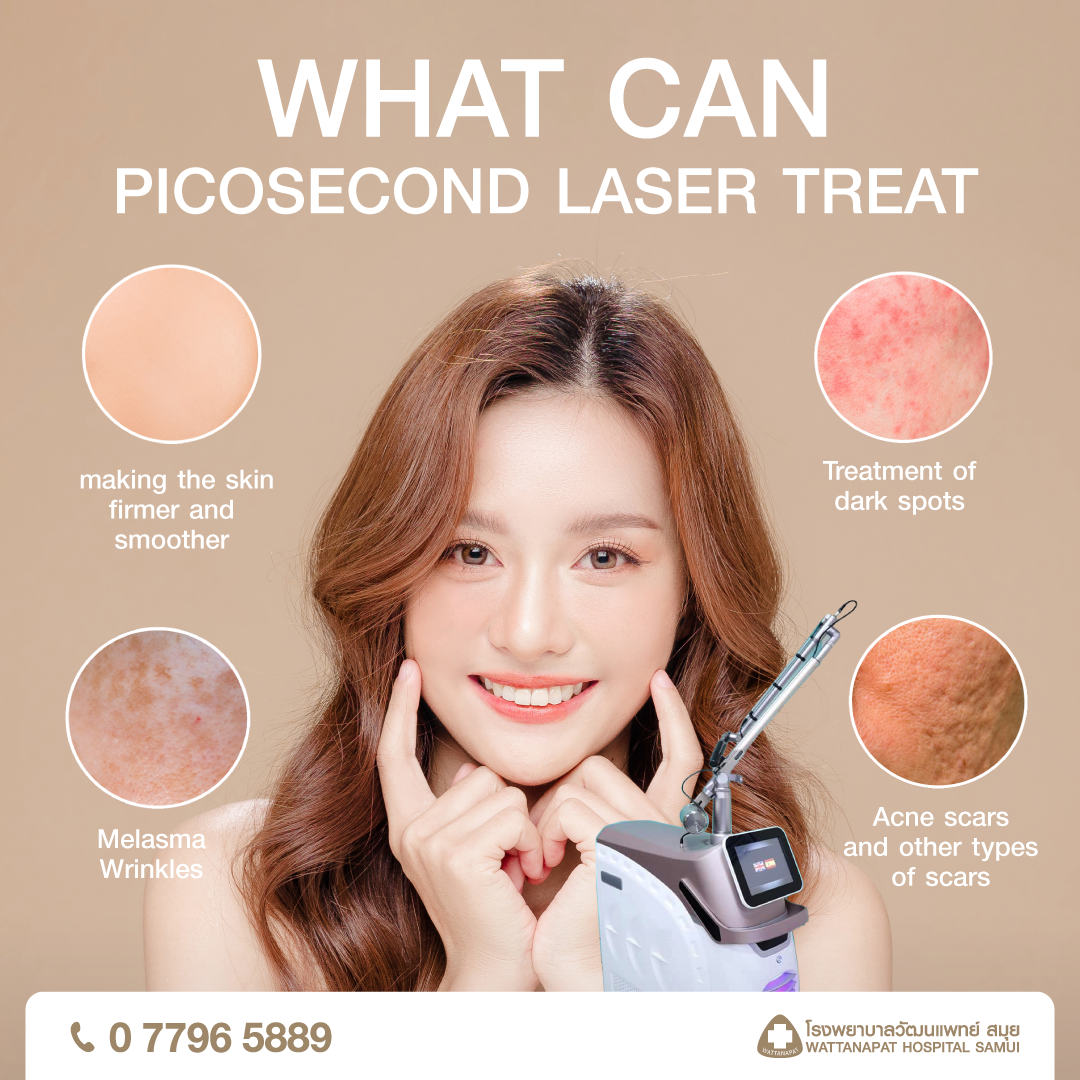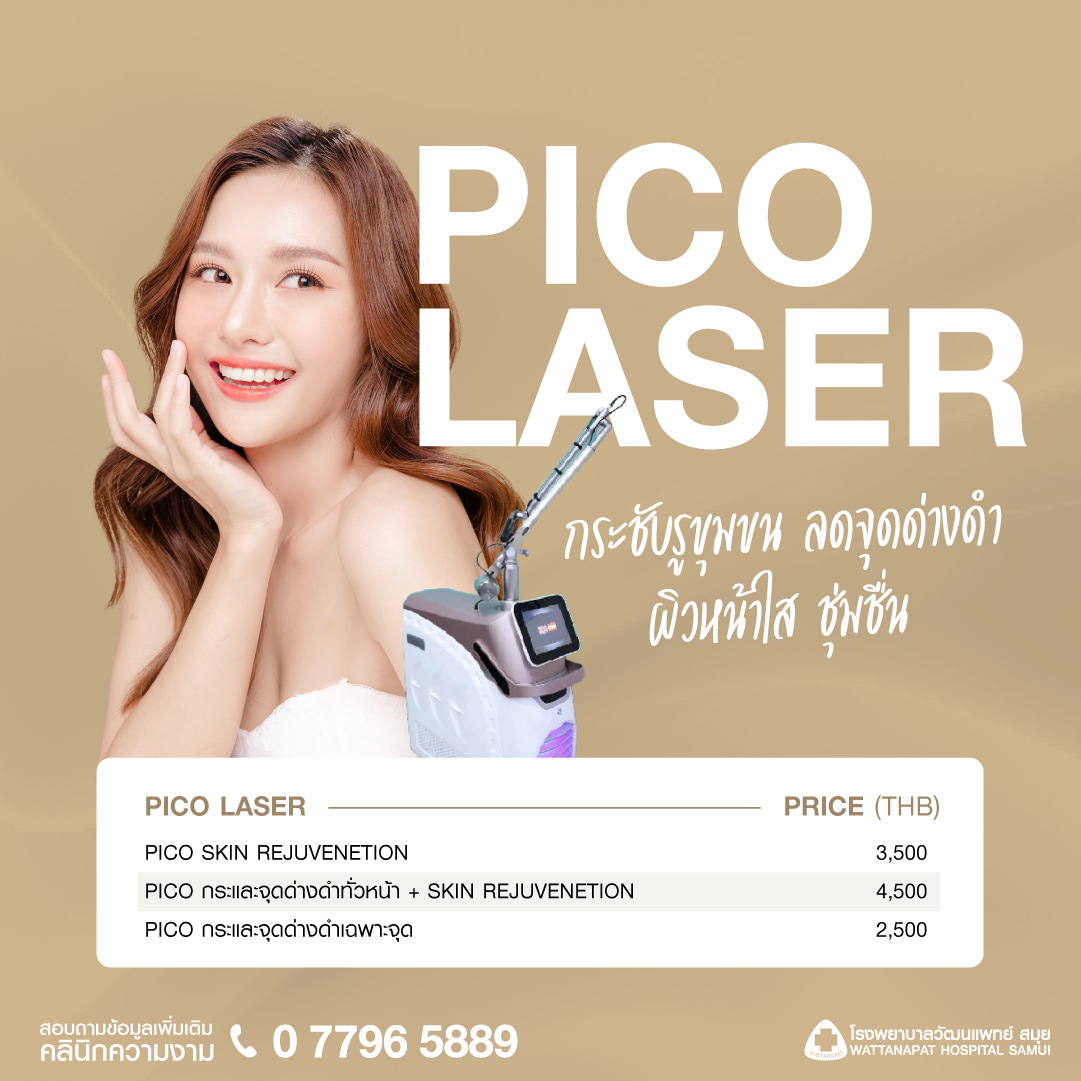Pico Laser Aftercare
Skin Care Tips After PICO Treatment for Radiant, Wrinkle-Free Skin
Skin Care Tips After PICO Treatment "Reveal radiant, wrinkle-free skin with proper care."
What is Picosecond Laser? The Picosecond Laser is the latest innovation in laser technology, designed specifically for skin treatment. It can effectively treat melasma, freckles, dark spots, acne scars, remove tattoos, and brighten the skin, even stimulating collagen production. The laser delivers energy at a frequency of Picosecond, which is faster than one trillionth of a second, allowing precise targeting of the treated area.
During treatment, the Pico Laser breaks down pigment clusters into smaller particles, enhancing the treatment’s effectiveness. The pigments break down quickly, stimulating collagen production under the skin, resulting in a brighter complexion. Visible results can be seen after the first session, and the treatment time is shorter compared to traditional laser systems.
What Can Picosecond Laser Treat?
- Tattoo removal
- Treatment of dark spots
- Skin rejuvenation and brightening, creating even skin tone
- Stimulating collagen production, making the skin firmer and smoother
- Treating acne scars and other types of scars

Pre-Treatment Preparation for PICO
- At least one week before treatment, discontinue certain medications, herbs, or supplements that may affect blood clotting, such as aspirin, garlic pills, ginseng, ginkgo, or vitamin E.
- If you have underlying health conditions like diabetes, epilepsy, photosensitivity, or heart disease requiring a pacemaker, or if you have a history of drug allergies, particularly to anesthesia, inform your doctor before the laser treatment.
- On the day of treatment, avoid using makeup, skin care products, or acne treatment creams, and cleanse your face thoroughly.
- Avoid outdoor activities for at least two weeks before the laser treatment.
Post-Treatment Skin Care After PICO
- Avoid washing your face or applying skin care products for 24 hours after the laser treatment, as it may slow down the healing process. After 24 hours, you can clean your face with gentle products, being very delicate in your skin care routine.
- If there are any wounds, avoid water exposure for two days post-treatment. If the wound gets wet, pat it dry with a clean cloth.
- Post-laser treatment is when the skin is more vulnerable, making it more prone to issues like melasma, freckles, and dark spots. Therefore, it is recommended to apply sunscreen with at least SPF 30 daily (even without laser treatment, sunscreen is recommended daily).
- You may experience a hot sensation on your skin after the treatment; applying a cold compress for about 5 minutes can reduce the skin's temperature and relieve the burning sensation. It also helps reduce redness post-laser.
- Apply antibiotic cream or Vaseline ointment to the wound as instructed by your doctor.
- Do not rub, scratch, or engage in activities that might cause friction or impact on the laser-treated area.
- If the wound area shows signs of swelling, redness, pus, pain, or intense itching, consult a doctor immediately.
- You can start using makeup or sunscreen one week after the laser treatment or once the scabs have fallen off and the skin is fully healed.
- Avoid sun exposure for two weeks post-laser treatment to allow your skin to recover.
Side Effects After PICO
- Pain, tenderness, and a burning sensation can be alleviated with a cold compress or pain relievers as prescribed by your doctor. These symptoms usually subside within 24 hours.
- Swelling may occur, particularly in cases where the treatment involves wounds or tattoo removal, and typically subsides within 2-3 days.
- Temporary redness may occur, usually disappearing within 2-3 hours.
- Darkening of the skin may occur in the treated area, which usually fades within 2-6 months, commonly seen in patients with darker skin tones. This can worsen with exposure to direct sunlight.
- Skin lightening can occur, particularly in areas that have undergone multiple treatments or due to the skin’s response to laser light. This fading typically resolves but may take several months or become permanent, though rare.
- Scarring is rare but may occur in cases of severe skin trauma or infection.
- Infection may arise from improper wound care or lack of cleanliness. Proper antibiotic use and wound care can reduce the risk of infection.
- Allergic reactions may occur, such as an allergic response to tattoo removal laser light or to topical antibiotics used on sensitive skin.



